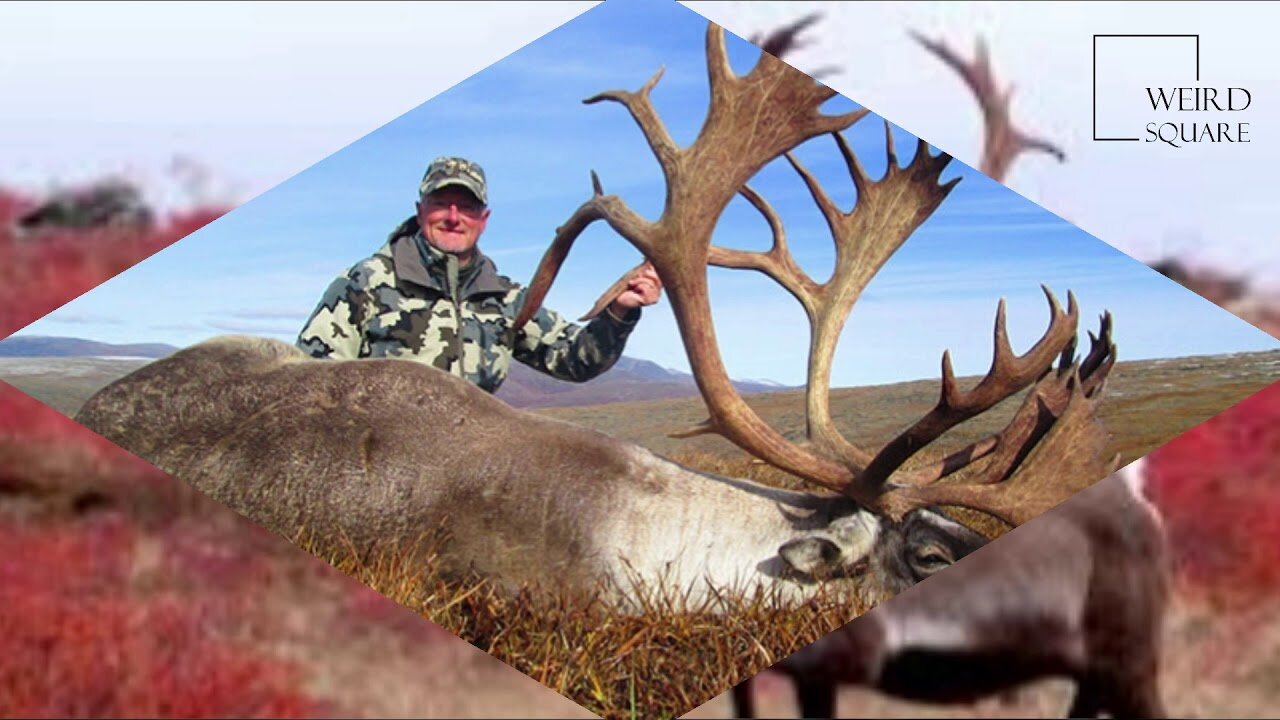Premium Only Content

Interesting facts about Caribou by weird square
Caribou, also known as reindeer, are fascinating creatures native to the Arctic and subarctic regions of North America, Europe, Asia, and Greenland. Here are some intriguing facts about them:
Migration Marvels: Caribou are renowned for their remarkable migration journeys, often covering thousands of miles annually. They undertake these treks in search of food and to breed, showcasing their incredible endurance and adaptability.
Antler Antics: Both male and female caribou grow antlers, a rare trait among cervids. The antlers serve various purposes, including dominance displays during mating season and defense against predators.
Arctic Adaptations: Caribou have several physiological adaptations that help them thrive in their harsh Arctic habitat. Their hooves are wide and concave, acting like snowshoes to prevent sinking into the snow, and they have a specialized nasal structure that warms the air they breathe before it enters their lungs.
Social Creatures: Caribou are highly social animals and often form large herds, particularly during migration. These herds can consist of thousands of individuals and provide protection against predators like wolves and bears.
Nutritional Nibbles: Caribou are primarily herbivores, with their diet consisting mainly of lichens, mosses, grasses, and shrubs. Their ability to digest lichens, which are abundant in the Arctic, sets them apart from other deer species.
Cultural Significance: Caribou hold significant cultural importance for indigenous peoples across the Arctic. They provide food, clothing, and materials for tools and shelter, making them a central aspect of traditional subsistence lifestyles.
Conservation Concerns: Despite their resilience, caribou face numerous threats, including habitat loss, climate change, predation, and disease. Several subspecies are classified as endangered or threatened, highlighting the need for conservation efforts to protect these iconic Arctic inhabitants.
#Caribou #Reindeer #ArcticWildlife #MigrationMarvels #WildlifeConservation #IndigenousCulture #ArcticAdaptations #Biodiversity #AnimalFacts #NatureLovers
-
 1:11:40
1:11:40
Josh Pate's College Football Show
6 hours ago $2.22 earnedPerfect CFB Conferences | Big Ohio State Changes | Canceling Spring Games | SEC 2025 Thoughts
33.9K -
 1:08:07
1:08:07
Bek Lover Podcast
4 hours agoInteresting Times with Bek Lover Podcast
14.5K -
 1:51:12
1:51:12
Tate Speech by Andrew Tate
7 hours agoEMERGENCY MEETING EPISODE 105 - UNBURDENED
154K75 -
 1:01:18
1:01:18
Tactical Advisor
10 hours agoBuilding a 308 AR10 Live! | Vault Room Live Stream 016
120K8 -
 2:17:02
2:17:02
Tundra Tactical
1 day ago $25.39 earnedTundra Nation Live : Shawn Of S2 Armament Joins The Boys
235K29 -
 23:22
23:22
MYLUNCHBREAK CHANNEL PAGE
2 days agoUnder The Necropolis - Pt 5
188K67 -
 54:05
54:05
TheGetCanceledPodcast
1 day ago $14.35 earnedThe GCP Ep.11 | Smack White Talks Smack DVD Vs WorldStar, Battle Rap, Universal Hood Pass & More...
185K36 -
 8:30
8:30
Game On!
14 hours ago $0.47 earnedLakers BLOCKBUSTER trade! Luka Doncic is coming to LA!
20.5K2 -
 48:29
48:29
hickok45
18 hours agoSunday Shoot-a-Round # 266
18.7K10 -
 15:18
15:18
SternAmerican
3 days agoStern American with Sam Anthony from YourNews.com
13.4K